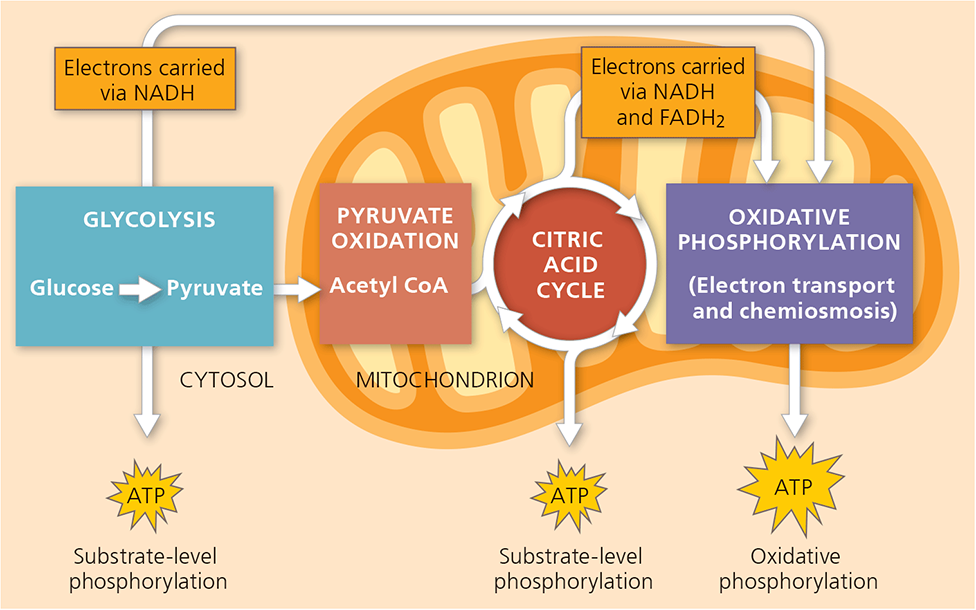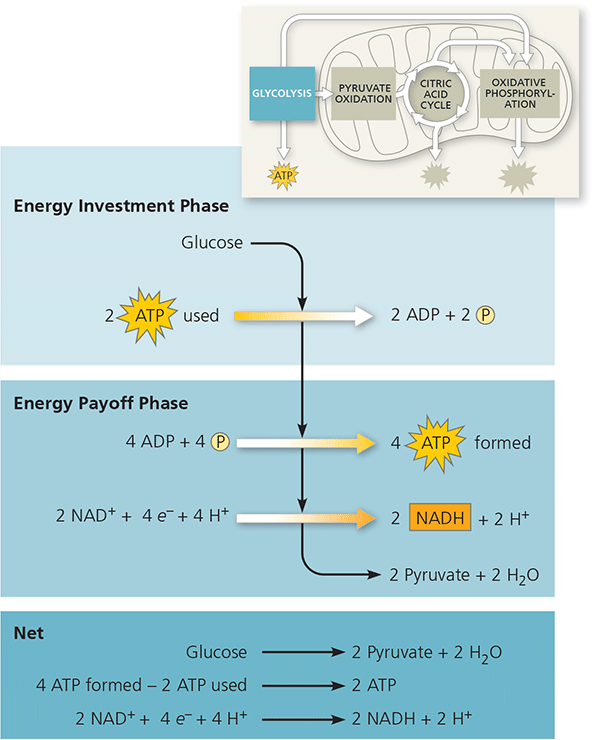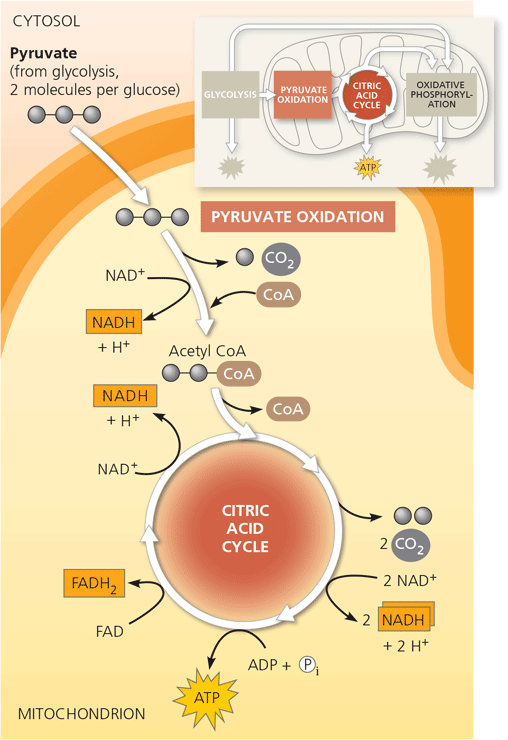
The overall cellular respiration reaction is:
![]()
Glucose and oxygen create water, carbon dioxide, and energy in the form of ATP and heat.
This reaction releases energy in the form of ATP that allows our bodies to perform basic functions. When we are not able to breathe for a long period of time, like when drowning, our bodies cannot generate enough energy, cells start dying, and eventually we can die.
ATP can be generated by two ways, substrate level phosphorylation and oxidative phosphorylation. Substrate level phosphorylation combines a phosphate and ADP in an enzyme to create ATP. Oxidative Phosphorylation uses an ATP synthase to catalyze the reaction from ADP and P to ATP.
Cellular Respiration Processes
Glycolysis

Glycolysis begins with a glucose molecule and ends with 2 pyruvate molecules that later enter the pyruvate oxidation phase. As glucose turns into pyruvate, NAD+ absorbs an electron and turns into NADH. NADH and FADH2 are known as electron carriers. The electron carriers absorb electrons from various points in cellular respiration and transport them to the final oxidative phosphorylation stage. Glycolysis has a net release of 2 ATP. Most of the energy in the original glucose molecule is still stored in the 2 pyruvate molecules.
Glycolysis occurs in the cytosol of the cell, so the pyruvate has remained outside the cell. The next stage of cellular respiration is pyruvate oxidation, which occurs in the mitochondria (the powerhouse of the cell), so the pyruvate must enter the mitochondria.
Pyruvate Oxidation

Pyruvate oxidation modifies the 2 pyruvate molecules by removing a CO2 molecule and removing an electron. The compound that is created is called acetyl coenzyme A (acetyl CoA), which then enters the Citric Acid Cycle. While pyruvate is being modified, each pyruvate releases an electron, causing NAD+ to gain another electron. Therefore, 2 NADH’s are formed in total during pyruvate oxidation.
Citric Acid Cycle
The Citric Acid Cycle is also called the Krebs cycle. This part of cellular respiration is called a cycle because it continuously regenerates the same compounds to create a continuous stream of mostly NADH’s and FADH2’s. The citric acid cycle diagram is shown to the right. In total, the citric acid cycle generates 6 NADH’s, 2 ATP’s, and 2 FADH2’s for each glucose molecule (halve each value for the products of only one pyruvate).
Oxidative Phosphorylation
Oxidative Phosphorylation uses the electron transport chain (ETC). All the NADH’s and FADH2’s that were previously created are transporting electrons to the ETC. The ETC is located in the inner mitochondrial membrane. The electrons are transferred from one complex to the next (as seen in the diagram), causing hydrogen ions to be transported from inside the mitochondrial matrix to the intermembrane space (the space between the inner and outer membranes of the mitochondria). The hydrogens ions form a gradient across the membrane, so naturally they want to diffuse back into the mitochondrial matrix. However, the only way they can do this is by passing through the ATP synthase. In chemiosmosis, the hydrogen ions pass through the ATP synthase, causing it to spin. The spinning allows ADP and P to combine and form ATP. Around 26-28 ATP are formed during oxidative phosphorylation.
One important note to remember is that oxygen is the final electron acceptor in the electron transport chain.
